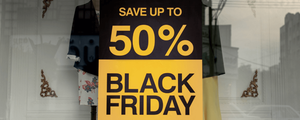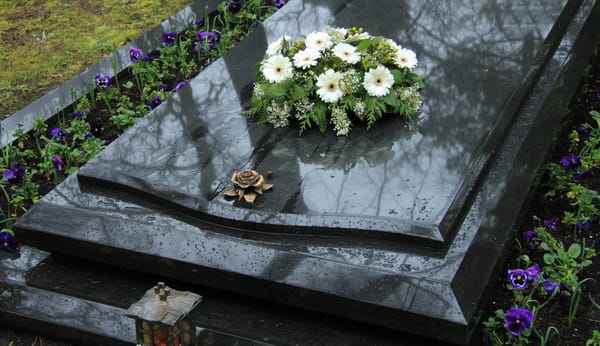Stokvels have been around in South Africa since the 19th Century when early settlers pitched their money together to buy livestock for ‘stock fairs’. It has become an entrenched part of South African culture ever since.
These mostly informal investment and savings funds are governed by the members themselves, built on trust and a common bond, with a constitution that is agreed to by all members and outlines the purpose and governance structures of the stokvel.
The latest United African Stokvel scam, however, has everyone a little more wary of placing their money into another person – or group’s – hands. While it’s by no means the first stokvel scam to be revealed, the scale and deceit involved have rocked South Africans to the core.
In this article, we unpack what a stokvel is, stokvel rules and regulations, and what to look out for before entering into a stokvel agreement.
What is a stokvel?
Traditional stokvels generally involve a group of people who have a common objective and put an agreed-upon amount of money into a shared pot. According to the National Stokvel Association of South Africa (or NASASA), group saving is not a concept that’s unique to South Africa – there are versions of this all over the world – but it certainly has become a foundational element of South African culture. South Africans from all walks of life and from all income levels opt into a stokvel to improve their homes and lives, finance a big investment, collectively save for their future or big cultural events, or use it to help stick to their savings goals.
Stokvels have become much more than just a way to access funding: in South Africa, stokvel groups are also support structures for people during times of need, and a close-knit community with a common goal for a prosperous future. Because members are often invited to a stokvel via a friend, colleague or family member, the group is built on a sense of trust and belonging.
What are the common types of stokvels?
- Savings clubs: Once a week or once a month, the members of the stokvel put a set amount into a collective account or pot. At the end of the cycle (often 6-12 months), everyone gets a lump sum to the value of the amount they put in. Think of it as an accountability club for savers.
- Rotational stokvels: Much like the above, although one member gets to take a lump sum out of the pot on a rotational basis. This is often used to help finance bigger purchases or investments.
- Grocery stokvels: There’s strength in numbers, and grocery stokvel members know they can get a deal on a bulk purchase. Each member puts in a regular amount throughout the year, and these bulk purchases are often made in November or December for the festive season.
- Investment clubs: Here members pool their collective money to invest in something that can help grow their wealth, like equities or a business venture. This is the model that the Franc Stokvel is based on. Although we’re a registered financial services provider, we utilise a stokvel account to pool investor money to enable members to access top funds with no minimums.
- Burial societies: Members each contribute to this fund to informally insure themselves when there’s a need for a funeral. This is as much of a social support system as it is a collective fund – members often help out practically, as well.
Where does a stokvel keep its money?
Traditionally, the money people put into a stokvel was stored in an upcycled biscuit tin and kept safe by one of the leading members. Luckily, there are now a few more advanced options out there.
Many banks offer stokvel-specific club accounts for members to save their money (often with little or no interest, unfortunately) and stokvel apps have popped up with customised offerings built especially for stokvels and their members. Especially in investment stokvels, stokvel leaders often invest the money directly into the agreed-upon fund, or via an investment app or platform.
How is a stokvel governed?
As we’ve already mentioned, stokvels are largely governed by the members themselves and built on trust. Any disputes that do arise are tackled with a good dose of diplomacy and social pressure, and with a goal to hold each other accountable. It’s very rare that any stokvel-related disputes make it to the courts.
It’s also very common for members to create and agree on a stokvel constitution that outlines the rules of the stokvel, how debts are collected and how meetings are run and office bearers elected. In many bigger stokvels, a chairperson, treasurer and secretary are appointed to hold the members accountable and make wise decisions with the money that is added to the pot.
How do you know if a stokvel is a scam?
Because stokvels were traditionally groups of people who had existing relationships (like friends, family or colleagues), this combination of trust, accountability and a formal constitution has been enough. But as stokvels get more popular, and more formal stokvels organised by people you don’t know offer great opportunities to tap into a pool of funds, how can you determine if they’re a scam or not?
If you’re considering entering into a stokvel that you’ve heard about, or someone you know has invited you, make sure you do your research before you hand over your money.
It’s important to know that stokvels aren’t regulated. NASASA is a company that represents the interests of their 800,000 constituent stokvel, but they don’t provide any oversight. This means you need to rely on a few other tell-tale signs to figure out whether a stokvel is not a good investment for your money:
- The returns are guaranteed and unrealistically high. 30-50% return on your investment within 30 days? Nuh-uh. If the deal you’re investing into sounds too good to be true, it probably is.
- None of the members know each other and the founding members are anonymous. A stokvel is based on the concept of shared goals, community, and transparency. If it doesn’t operate like this, it could be an investment fund disguised as a stokvel – likely to avoid having to comply with financial regulations and register with the Financial Sector Conduct Authority (FSCA). Make sure you know and trust the person you’re dealing with, and that you can verify their identity.
- There’s no transparency about where your money is going. Stokvels are based on the premise of collective saving and collective decision-making. When there’s an investment or money management decision made, it’s crucial that all members understand why and the risks involved, and that this is clearly documented with records. If you’re in the dark about how your money is handled, don’t trust the setup.
- Other members are endorsing the group (and making a profit by doing so). Stokvel members are known to invite people from the community, but generally don’t get paid a ‘commission’ for doing so. If that’s the case, it’s likely a ponzi scheme: where early members are paid returns from the contributions of later investors they bring on. Unfortunately, the money almost always runs out.
- There’s a lot of hype and false claims. Words like ‘registered’, ‘approved’ and ‘accredited’ are easy to throw around. Double check the information with the FSCA if this claim is made. Even if you see a lot of hype in the media, do your homework first.
It can be daunting to decide what to do with your money, especially when there are so many reported scams on the news. It’s a major failing that there are no regulations on how and where mismanagement of stokvel funds is to be reported. Just make sure you do your research and look out for the signs, and if you are a victim to theft of funds or fraud involving a stokvel, report it to the South African Police Service for investigation – it’s still a crime.










